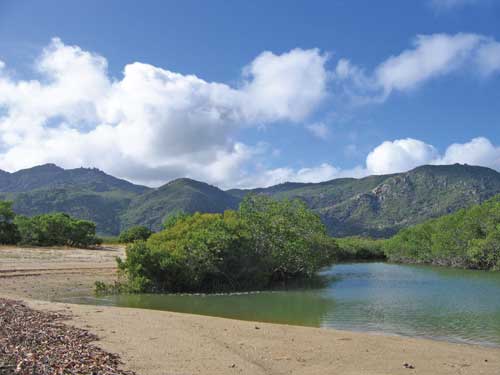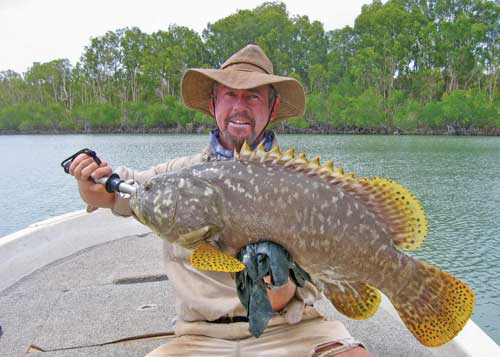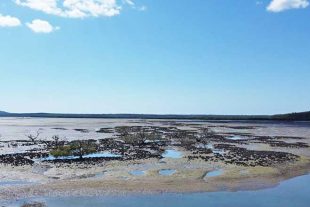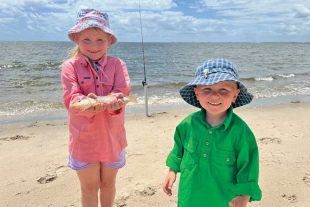With the barramundi fishing season set to close in Queensland on October 7 in Gulf waters and November 1 in east coast waters, it seems like a good time to focus on this iconic tropical species.
While countless words have been written about barramundi, methods for best targeting them can vary seasonally.
October is part of the famous – or infamous – build up period to the wet season.
At this time of year, the sun has got its sting well and truly back, and humidity levels are getting right up there.
Winter typically sees a slowdown in barramundi activity; a time when it is often necessary to use live bait such as mullet or cherubic (freshwater prawn) to attract a bite, or to get lures down quite deep to where the fish are hanging out.
It often pays to target snags or other structure in shady areas, as barramundi often prefer cooler hangouts.
This time of year generally lacks the freshwater runoff that is so productive during the wet and early dry seasons, though tidal drains and creek mouths can be super productive.
Any snags or rock bars around such areas should also be worked over properly.

The breeding instinct for barramundi is strong at this time of year, and in running freshwater rivers most fish will be moving down to the estuaries to spawn – some may have already done so.
These productive ecosystems are obviously the best places to target.
As well as the usual snags, creek mouths and tidal gutters, the mangrove edges on high tide can offer exceptional fishing.
In fact, this is one of my favourite habitats to fish for this amazing species – drawing them out and seeing or feeling that cracker hit is just magic.
Then, of course, there’s the challenge of keeping them out of those abundant tangled roots.
Often there’ll be a mangrove tree or two out in the open away from the main mangrove edge, and these too can be fish hot spots.
Threadfin, blue salmon, mangrove jack, and (protected) Queensland groper are also a good chance in most estuaries.
Landlocked freshwater river holes and billabongs will still be holding their barra of course, as those fish must wait for monsoonal floods to release them into river mouths to breed.

Regardless of the location, my experience is that early mornings and late afternoons are the most productive times to fish at this time of year.
Barramundi are typically lethargic in the heat of the day, though there are always exceptions.
Night fishing can also be fabulous, usually using poppers or fizzers and aided by a good head torch.
A torch helps you see the ruby-red eye shines of barramundi and tarpon and even saratoga if they’re around.
These fish usually patrol the edges and shallows.
And, of course, crocodiles too have red eye shines.
As the croc-wise advice promotes – standing well back from the bank at all times is important for safety.
Both hard-bodies and soft plastics will still work at this time of year, though it can pay to try different options if the fish aren’t biting.
Quite a few times I’ve seen barra change their preference from hard-body lures to plastics, and vice versa, which is likely related to the prey they are chasing at the time.
Staff at the Lure Shop in Cooktown and Tackle World in Weipa, as well as other far North Queensland outlets often have the drum on what lures work locally at any season.
October may see a few thunderstorms on the western Peninsula, however these are usually very isolated and just small ‘practice’ storms for the bigger event due later this year!
Until next month, enjoy the last of the barramundi fishing for a while and stay safe.
 Bush ‘n Beach Fishing Magazine Location reports & tips for fishing, boating, camping, kayaking, 4WDing in Queensland and Northern NSW
Bush ‘n Beach Fishing Magazine Location reports & tips for fishing, boating, camping, kayaking, 4WDing in Queensland and Northern NSW









